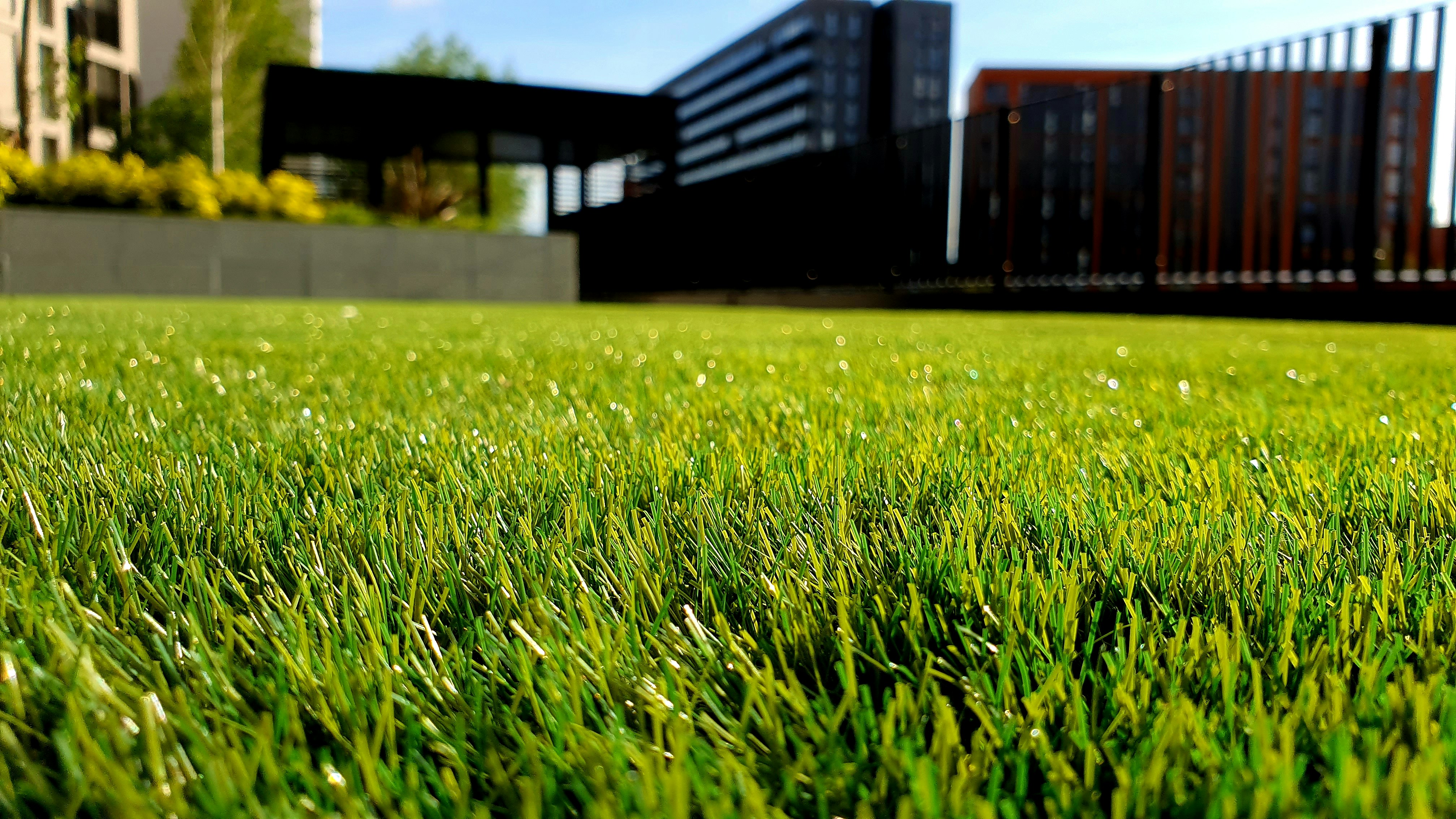Mowing
Mowing
Mowing
Mowing
Weeds vs. Your Lawn: Winning the Battle
Don't let weeds overrun your yard! Understand common weed types, explore both preventative and targeted weed control strategies, and achieve a weed-free lawn.
Weeds vs. Your Lawn: Winning the Battle
Don't let weeds overrun your yard! Understand common weed types, explore both preventative and targeted weed control strategies, and achieve a weed-free lawn.
Weeds vs. Your Lawn: Winning the Battle
Don't let weeds overrun your yard! Understand common weed types, explore both preventative and targeted weed control strategies, and achieve a weed-free lawn.
Weeds vs. Your Lawn: Winning the Battle
Don't let weeds overrun your yard! Understand common weed types, explore both preventative and targeted weed control strategies, and achieve a weed-free lawn.

Written by
John Doe

Written by
John Doe

Written by
John Doe

Written by
John Doe




We all dream of a picture-perfect lawn: a vibrant green carpet that complements our home and adds a touch of serenity to our outdoor space. But the reality is, unwelcome weeds can quickly turn that dream into a never-ending battle. Fear not, fellow lawn warriors! This blog is your arsenal for conquering those pesky weeds and achieving a lawn of champions.
Know Your Enemy: Understanding Common Weeds
The first step to winning any battle is understanding your opponent. Here are some common lawn invaders you might encounter:
Crabgrass: This annual weed thrives in hot weather and spreads rapidly through creeping stems.
Dandelions: These cheerful yellow flowers might seem charming, but their taproots steal valuable nutrients from your grass.
Clover: While clover can fix nitrogen in the soil, its patchy growth disrupts the uniform look of your lawn.
Nutsedge: This persistent weed resembles sedge grass but has thicker blades and nut-like tubers underground.
Prevention is Key: Building a Strong Defense
The best offense is a good defense, and when it comes to weeds, a healthy lawn is your best weapon. Here's how to create a thriving turf that naturally discourages weeds:
Mow High, Not Low: Contrary to popular belief, keeping your grass short weakens it and allows weeds to take hold. Aim for a mowing height of 2.5 to 3 inches.
Water Deeply, Not Frequently: Frequent shallow watering encourages shallow root growth in your grass, making it vulnerable to weeds. Water deeply and less often to promote strong, deep root systems.
Fertilize Regularly: A healthy lawn with proper nutrients is better equipped to fight off weed invasions. Use a slow-release fertilizer formulated for your specific grass type.
Aerate Your Soil: Compacted soil restricts air and water flow, hindering your grass and giving weeds an advantage. Aerate your lawn regularly to improve drainage and root growth.
Targeted Tactics: Taking Out the Invaders
Even with a strong defense, some weeds may sneak in. Here are some methods to eliminate them:
Hand Pulling: This is a great option for small infestations or stubborn weeds. Just ensure you remove the entire root system to prevent regrowth.
Spot Treatment: For targeted weed removal, use a selective herbicide that kills the weed without harming your grass. Always read and follow the instructions carefully.
Mulch: Apply a layer of organic mulch around flower beds and trees to prevent weeds from germinating in those areas.
Victory is Sweet: The Rewards of a Weed-Free Lawn
By implementing these strategies, you can transform your lawn from a weed-ridden battlefield into a lush green haven. Here's what you can expect:
Increased Curb Appeal: A well-maintained lawn enhances the beauty of your property and boosts its value.
Improved Drainage: Healthy grass with deep roots absorbs water more effectively, reducing runoff and improving drainage in your yard.
A More Inviting Space: A weed-free lawn creates a more relaxing and enjoyable outdoor space for you and your family.
Remember, the fight against weeds is an ongoing one. But with consistent effort and the right strategies, you can achieve a winning lawn and enjoy a beautiful green oasis for years to come.
We all dream of a picture-perfect lawn: a vibrant green carpet that complements our home and adds a touch of serenity to our outdoor space. But the reality is, unwelcome weeds can quickly turn that dream into a never-ending battle. Fear not, fellow lawn warriors! This blog is your arsenal for conquering those pesky weeds and achieving a lawn of champions.
Know Your Enemy: Understanding Common Weeds
The first step to winning any battle is understanding your opponent. Here are some common lawn invaders you might encounter:
Crabgrass: This annual weed thrives in hot weather and spreads rapidly through creeping stems.
Dandelions: These cheerful yellow flowers might seem charming, but their taproots steal valuable nutrients from your grass.
Clover: While clover can fix nitrogen in the soil, its patchy growth disrupts the uniform look of your lawn.
Nutsedge: This persistent weed resembles sedge grass but has thicker blades and nut-like tubers underground.
Prevention is Key: Building a Strong Defense
The best offense is a good defense, and when it comes to weeds, a healthy lawn is your best weapon. Here's how to create a thriving turf that naturally discourages weeds:
Mow High, Not Low: Contrary to popular belief, keeping your grass short weakens it and allows weeds to take hold. Aim for a mowing height of 2.5 to 3 inches.
Water Deeply, Not Frequently: Frequent shallow watering encourages shallow root growth in your grass, making it vulnerable to weeds. Water deeply and less often to promote strong, deep root systems.
Fertilize Regularly: A healthy lawn with proper nutrients is better equipped to fight off weed invasions. Use a slow-release fertilizer formulated for your specific grass type.
Aerate Your Soil: Compacted soil restricts air and water flow, hindering your grass and giving weeds an advantage. Aerate your lawn regularly to improve drainage and root growth.
Targeted Tactics: Taking Out the Invaders
Even with a strong defense, some weeds may sneak in. Here are some methods to eliminate them:
Hand Pulling: This is a great option for small infestations or stubborn weeds. Just ensure you remove the entire root system to prevent regrowth.
Spot Treatment: For targeted weed removal, use a selective herbicide that kills the weed without harming your grass. Always read and follow the instructions carefully.
Mulch: Apply a layer of organic mulch around flower beds and trees to prevent weeds from germinating in those areas.
Victory is Sweet: The Rewards of a Weed-Free Lawn
By implementing these strategies, you can transform your lawn from a weed-ridden battlefield into a lush green haven. Here's what you can expect:
Increased Curb Appeal: A well-maintained lawn enhances the beauty of your property and boosts its value.
Improved Drainage: Healthy grass with deep roots absorbs water more effectively, reducing runoff and improving drainage in your yard.
A More Inviting Space: A weed-free lawn creates a more relaxing and enjoyable outdoor space for you and your family.
Remember, the fight against weeds is an ongoing one. But with consistent effort and the right strategies, you can achieve a winning lawn and enjoy a beautiful green oasis for years to come.
We all dream of a picture-perfect lawn: a vibrant green carpet that complements our home and adds a touch of serenity to our outdoor space. But the reality is, unwelcome weeds can quickly turn that dream into a never-ending battle. Fear not, fellow lawn warriors! This blog is your arsenal for conquering those pesky weeds and achieving a lawn of champions.
Know Your Enemy: Understanding Common Weeds
The first step to winning any battle is understanding your opponent. Here are some common lawn invaders you might encounter:
Crabgrass: This annual weed thrives in hot weather and spreads rapidly through creeping stems.
Dandelions: These cheerful yellow flowers might seem charming, but their taproots steal valuable nutrients from your grass.
Clover: While clover can fix nitrogen in the soil, its patchy growth disrupts the uniform look of your lawn.
Nutsedge: This persistent weed resembles sedge grass but has thicker blades and nut-like tubers underground.
Prevention is Key: Building a Strong Defense
The best offense is a good defense, and when it comes to weeds, a healthy lawn is your best weapon. Here's how to create a thriving turf that naturally discourages weeds:
Mow High, Not Low: Contrary to popular belief, keeping your grass short weakens it and allows weeds to take hold. Aim for a mowing height of 2.5 to 3 inches.
Water Deeply, Not Frequently: Frequent shallow watering encourages shallow root growth in your grass, making it vulnerable to weeds. Water deeply and less often to promote strong, deep root systems.
Fertilize Regularly: A healthy lawn with proper nutrients is better equipped to fight off weed invasions. Use a slow-release fertilizer formulated for your specific grass type.
Aerate Your Soil: Compacted soil restricts air and water flow, hindering your grass and giving weeds an advantage. Aerate your lawn regularly to improve drainage and root growth.
Targeted Tactics: Taking Out the Invaders
Even with a strong defense, some weeds may sneak in. Here are some methods to eliminate them:
Hand Pulling: This is a great option for small infestations or stubborn weeds. Just ensure you remove the entire root system to prevent regrowth.
Spot Treatment: For targeted weed removal, use a selective herbicide that kills the weed without harming your grass. Always read and follow the instructions carefully.
Mulch: Apply a layer of organic mulch around flower beds and trees to prevent weeds from germinating in those areas.
Victory is Sweet: The Rewards of a Weed-Free Lawn
By implementing these strategies, you can transform your lawn from a weed-ridden battlefield into a lush green haven. Here's what you can expect:
Increased Curb Appeal: A well-maintained lawn enhances the beauty of your property and boosts its value.
Improved Drainage: Healthy grass with deep roots absorbs water more effectively, reducing runoff and improving drainage in your yard.
A More Inviting Space: A weed-free lawn creates a more relaxing and enjoyable outdoor space for you and your family.
Remember, the fight against weeds is an ongoing one. But with consistent effort and the right strategies, you can achieve a winning lawn and enjoy a beautiful green oasis for years to come.
We all dream of a picture-perfect lawn: a vibrant green carpet that complements our home and adds a touch of serenity to our outdoor space. But the reality is, unwelcome weeds can quickly turn that dream into a never-ending battle. Fear not, fellow lawn warriors! This blog is your arsenal for conquering those pesky weeds and achieving a lawn of champions.
Know Your Enemy: Understanding Common Weeds
The first step to winning any battle is understanding your opponent. Here are some common lawn invaders you might encounter:
Crabgrass: This annual weed thrives in hot weather and spreads rapidly through creeping stems.
Dandelions: These cheerful yellow flowers might seem charming, but their taproots steal valuable nutrients from your grass.
Clover: While clover can fix nitrogen in the soil, its patchy growth disrupts the uniform look of your lawn.
Nutsedge: This persistent weed resembles sedge grass but has thicker blades and nut-like tubers underground.
Prevention is Key: Building a Strong Defense
The best offense is a good defense, and when it comes to weeds, a healthy lawn is your best weapon. Here's how to create a thriving turf that naturally discourages weeds:
Mow High, Not Low: Contrary to popular belief, keeping your grass short weakens it and allows weeds to take hold. Aim for a mowing height of 2.5 to 3 inches.
Water Deeply, Not Frequently: Frequent shallow watering encourages shallow root growth in your grass, making it vulnerable to weeds. Water deeply and less often to promote strong, deep root systems.
Fertilize Regularly: A healthy lawn with proper nutrients is better equipped to fight off weed invasions. Use a slow-release fertilizer formulated for your specific grass type.
Aerate Your Soil: Compacted soil restricts air and water flow, hindering your grass and giving weeds an advantage. Aerate your lawn regularly to improve drainage and root growth.
Targeted Tactics: Taking Out the Invaders
Even with a strong defense, some weeds may sneak in. Here are some methods to eliminate them:
Hand Pulling: This is a great option for small infestations or stubborn weeds. Just ensure you remove the entire root system to prevent regrowth.
Spot Treatment: For targeted weed removal, use a selective herbicide that kills the weed without harming your grass. Always read and follow the instructions carefully.
Mulch: Apply a layer of organic mulch around flower beds and trees to prevent weeds from germinating in those areas.
Victory is Sweet: The Rewards of a Weed-Free Lawn
By implementing these strategies, you can transform your lawn from a weed-ridden battlefield into a lush green haven. Here's what you can expect:
Increased Curb Appeal: A well-maintained lawn enhances the beauty of your property and boosts its value.
Improved Drainage: Healthy grass with deep roots absorbs water more effectively, reducing runoff and improving drainage in your yard.
A More Inviting Space: A weed-free lawn creates a more relaxing and enjoyable outdoor space for you and your family.
Remember, the fight against weeds is an ongoing one. But with consistent effort and the right strategies, you can achieve a winning lawn and enjoy a beautiful green oasis for years to come.
Blog
The Lush Lawn Blog
Learn about lawn care basics, seasonal tips, pest control, troubleshooting, and more.
Contact Us
Get Your Free Lawn Care Quote
Curious about how we can help, or have specific lawn concerns? Drop us a line, and we'll get back to you within 24 hours.

